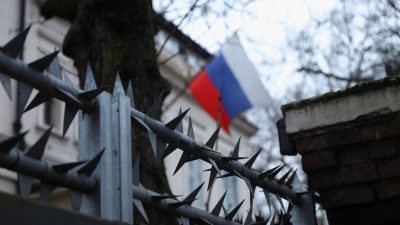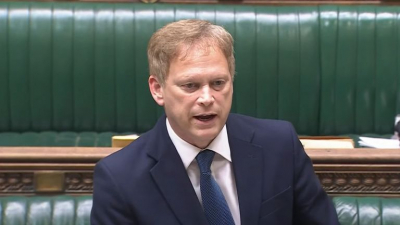Amidst the flurry of Holyrood drama, John Swinney prepares to ascend as the new leader of the SNP and potentially Scotland's first minister. For Mr. Swinney, his wife, and son, this marks a moment of pride, marking his emergence from the shadow of Nicola Sturgeon after serving as her deputy for nearly a decade. While his previous stint as SNP leader in the early 2000s was marred by criticism, the landscape has shifted, presenting an opportunity for him to shape a new trajectory.
However, challenges loom large as he steps into his new role. With a career spanning four decades within the SNP, there are doubts about the extent to which he can infuse fresh perspectives. His tenure as education secretary during the tumultuous COVID crisis, overseeing Scotland's finances, and recent controversies like wiping COVID-related WhatsApp messages, cast shadows over his leadership.
As he settles into his new office, two pressing issues demand his attention. Firstly, amidst forecasts of a challenging general election for the SNP, internal pressure mounts for Swinney to craft a revamped independence strategy. While tempted by the well-trodden path of demanding referendum powers from Westminster, Swinney hints at a departure from this approach, proposing a dialogue with skeptics to bolster support for independence.
Secondly, the contentious gender-recognition reforms loom large on Swinney's agenda. With Holyrood proposals stalled by legal challenges, questions abound regarding Swinney's stance on these reforms, particularly concerning the inclusion of 16-year-olds in the gender-recognition process without medical diagnosis, a move contested by Whitehall ministers as breaching UK-wide equality laws.
As John Swinney takes the helm, the eyes of Scotland are fixed on his leadership, eager to witness the direction he charts for the SNP and the nation.
With the controversial gender-recognition legislation currently in limbo, John Swinney faces a pivotal decision: whether to discard it altogether, acknowledging its divisive nature within the SNP, or to cautiously amend the existing law, hoping to avoid further legal challenges. In a recent interview with Sky News, Swinney admitted the need for careful consideration before making his move, highlighting the complexity of the issue at hand.
The sequence of events leading to Swinney's imminent leadership reveals a flurry of political maneuvering within the SNP. As Humza Yousaf tearfully announced his resignation, the party's establishment swiftly coalesced around Swinney. Yet, questions linger about the discussions unfolding behind the scenes during Yousaf's departure. While some suggest Yousaf's decision was made independently, others speculate about orchestrated exits.
Swinney's ascension stirred both anticipation and dissent, particularly among supporters of former contender Kate Forbes. Rumors of a potential "stitch-up" by the party's hierarchy incited fury within Forbes' camp, amplifying the drama engulfing Holyrood. Despite Forbes' substantial backing in the 2023 leadership race, concerns about the repercussions of a contested election prompted clandestine negotiations aimed at averting a divisive showdown.
In the eleventh hour, as Swinney publicly declared his candidacy, the Forbes camp remained undecided, underscoring the high-stakes negotiations unfolding behind closed doors. Swinney's conciliatory speech, notably acknowledging Forbes and emphasizing unity, resonated with her supporters, signaling a potential détente.
The promise of a "significant" role for Forbes in Swinney's cabinet hinted at a nascent alliance, raising questions about the nature and efficacy of such collaboration. Swinney's pledge to prioritize competence in his government's reset underscores the imperative of cohesive leadership in navigating Scotland's complex political landscape.
As John Swinney assumes the mantle of leadership within the SNP, doubts linger regarding the extent of transformation he can enact, given the party's prolonged tenure in power nearing two decades. With Labour nipping at the SNP's heels, Swinney is acutely aware of the mounting pressure.
Critics suggest that Swinney's primary task is to navigate the party through a period of decline, a sentiment echoed by opponents who perceive his role as that of a mere caretaker. However, staunch supporters paint a different picture, portraying Swinney as the SNP's beacon of hope, poised to stabilize the party's trajectory following a tumultuous 24 months marred by setbacks and missteps.
As the political landscape evolves and challenges mount, Swinney finds himself at a pivotal juncture, tasked with steering the SNP through uncharted waters while fending off resurgent rivals. The coming months will test his leadership prowess and determine whether he can fulfill the lofty expectations thrust upon him by both allies and adversaries alike.
In the crucible of leadership, John Swinney faces the daunting task of reshaping the SNP's trajectory amidst mounting challenges and lingering doubts. As he embarks on this journey, the verdict on his tenure will ultimately be determined by his ability to navigate the complexities of governance, inspire unity within the party, and chart a course towards a future that resonates with the aspirations of Scotland. Whether Swinney emerges as a transformative force or a custodian of stability remains to be seen, but one thing is certain: the next chapter in the SNP's story will be written by his hand, and its outcome will reverberate across the political landscape of Scotland and beyond.







